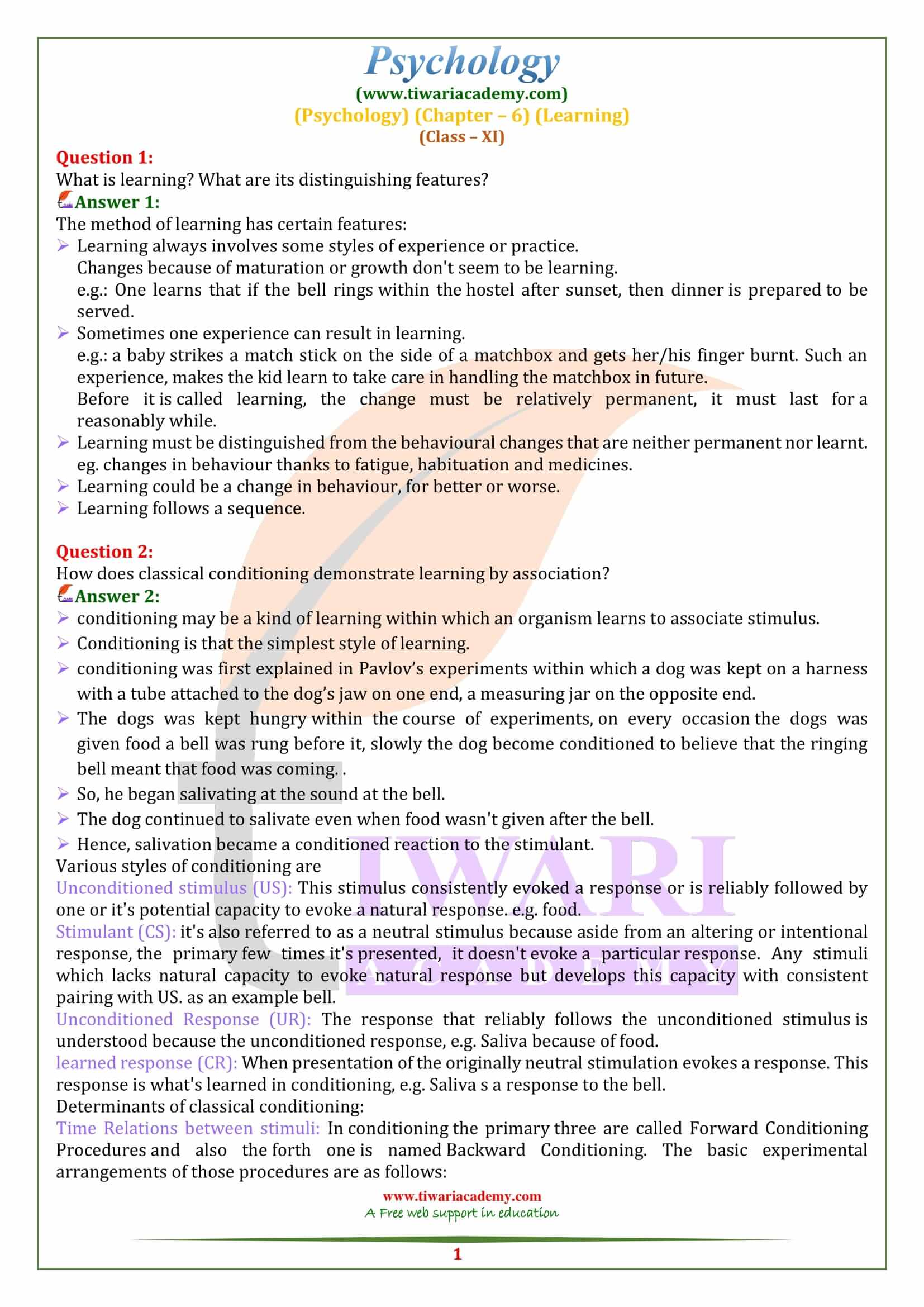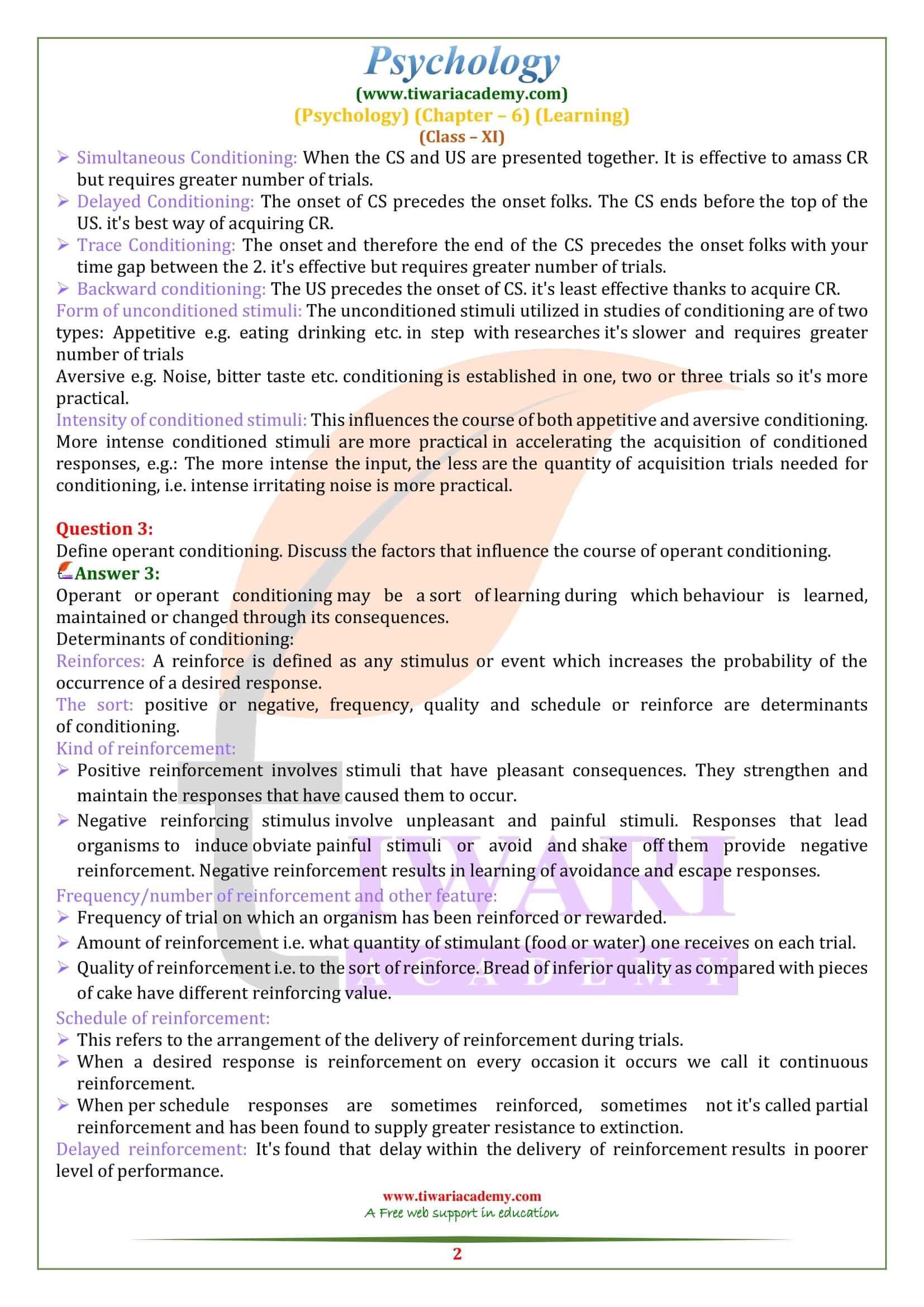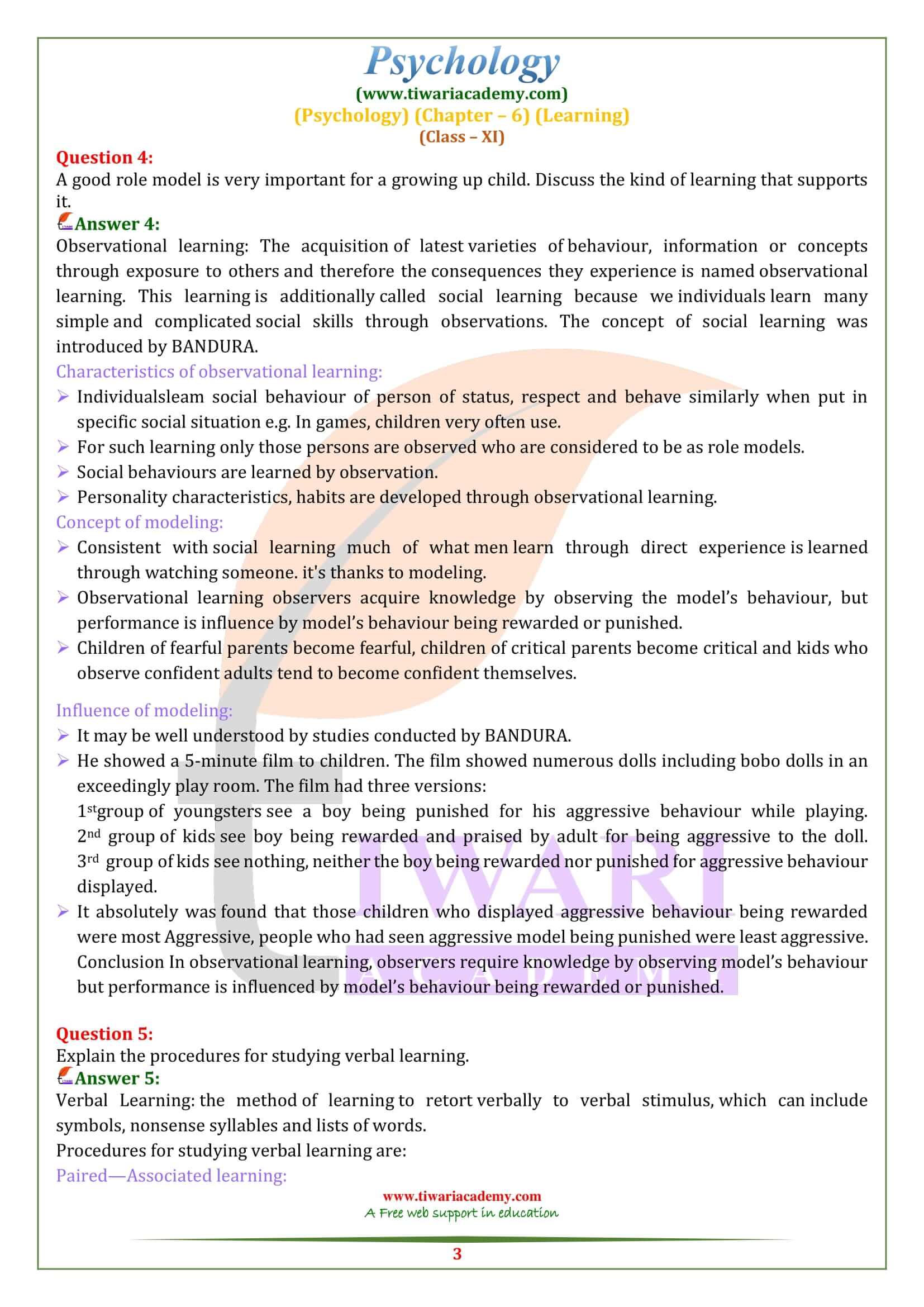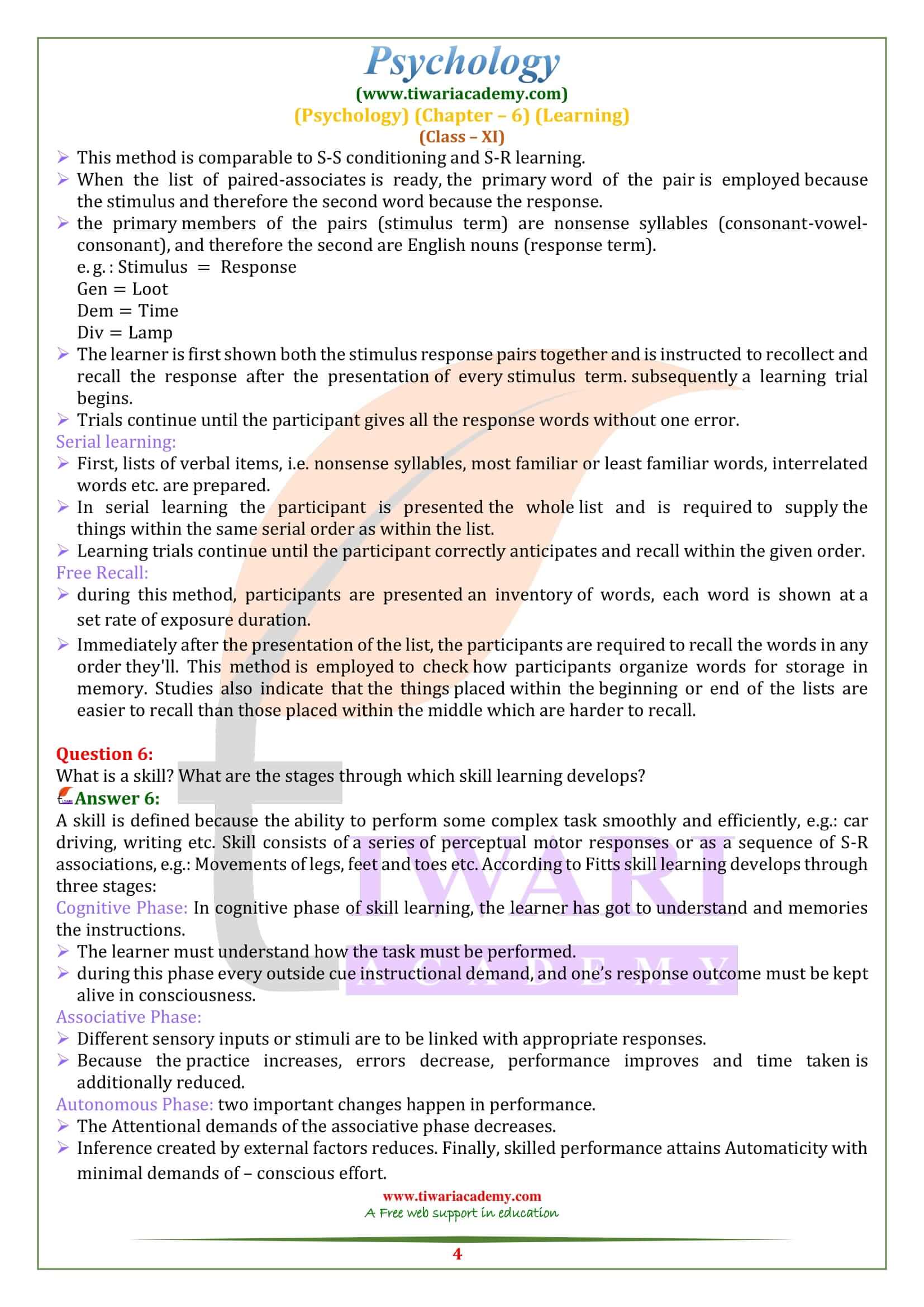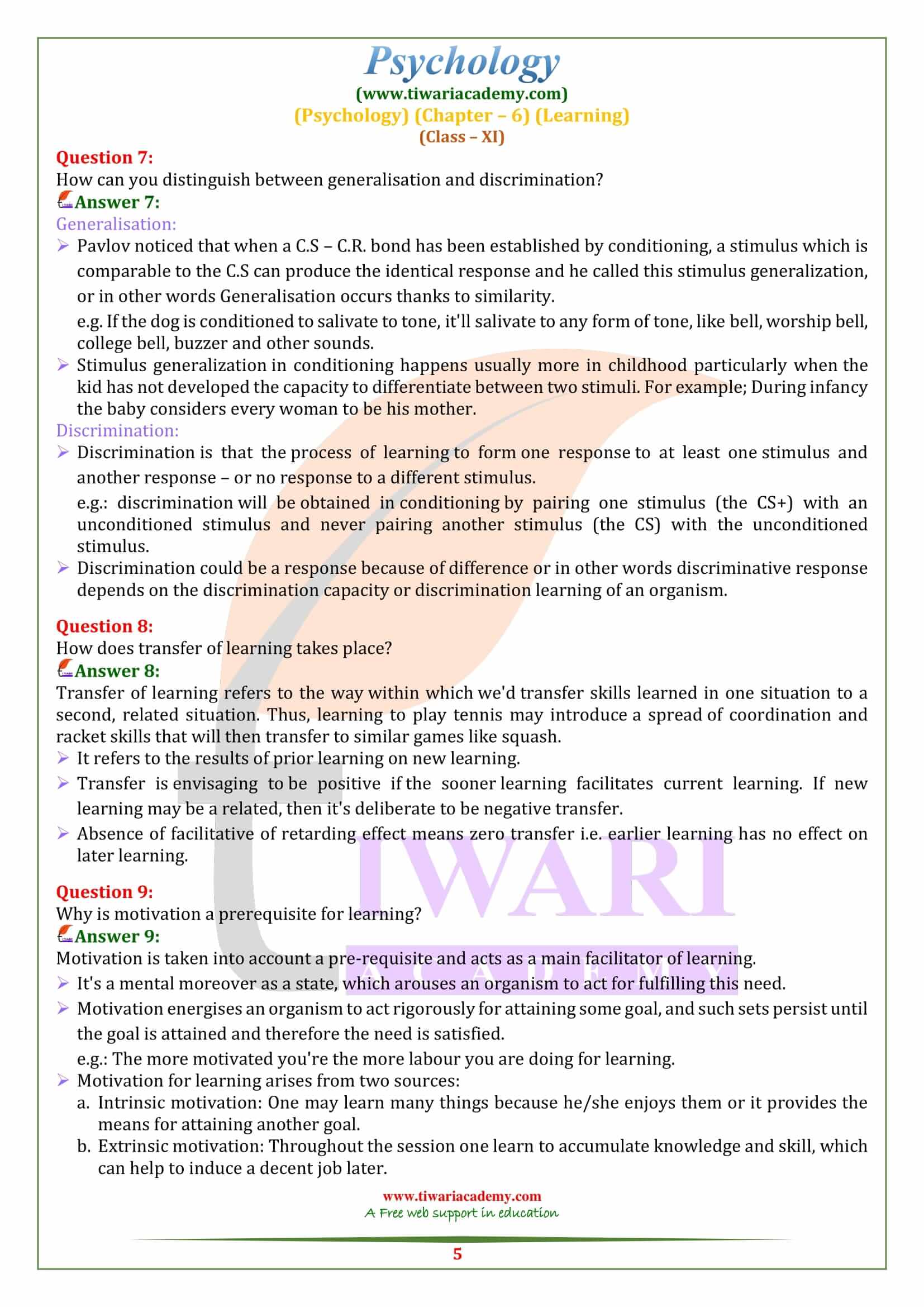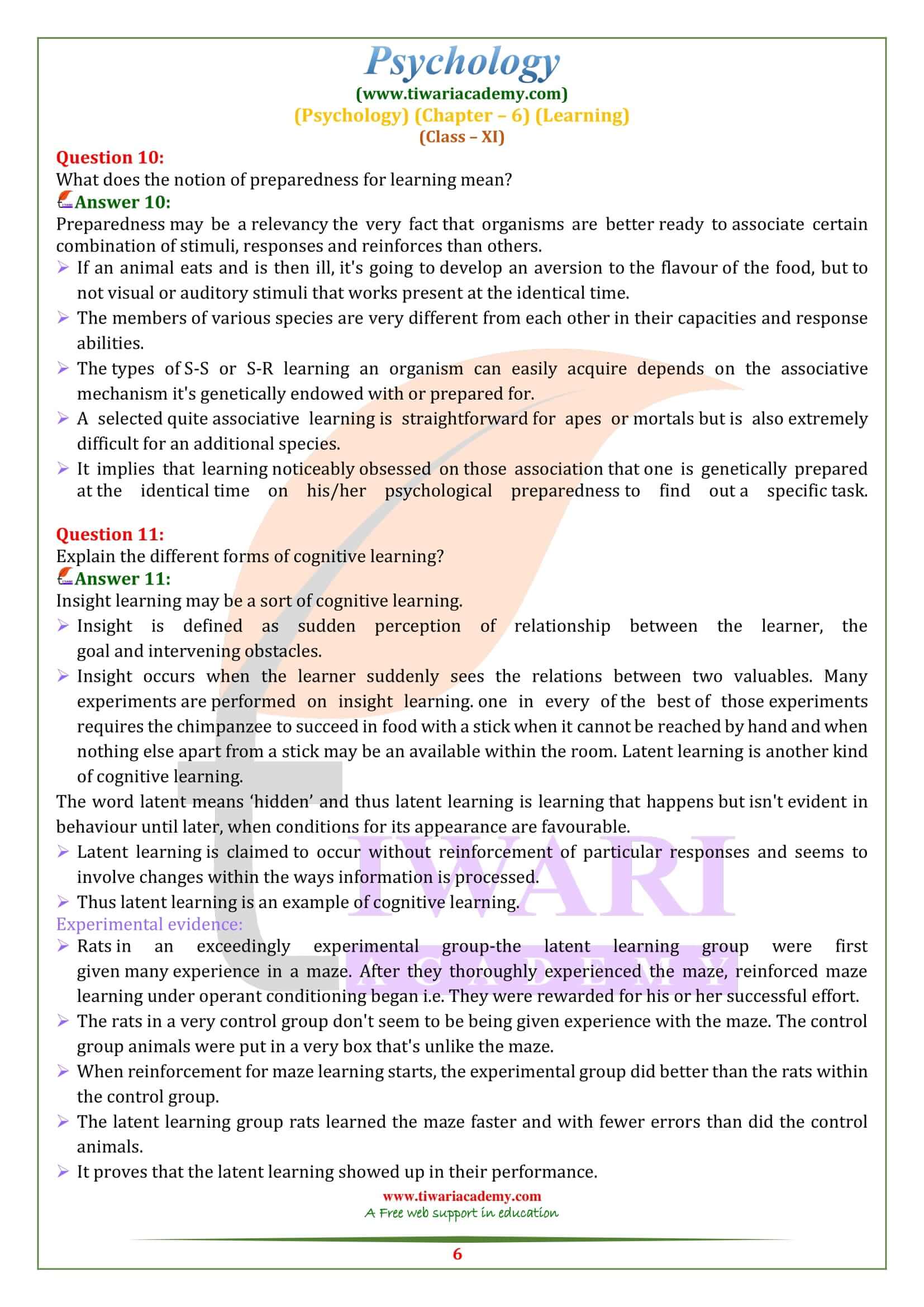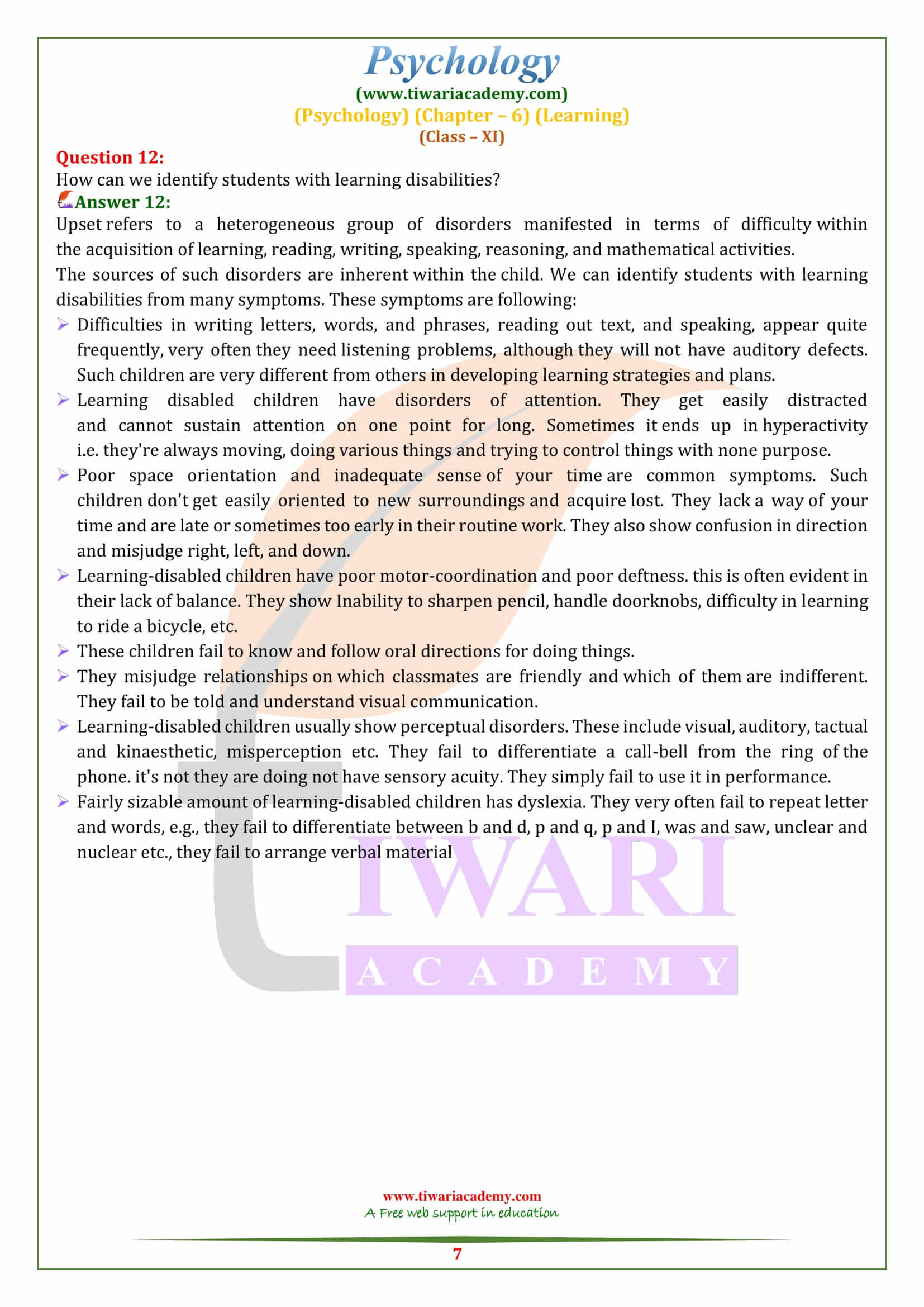NCERT Solutions for Class 11 Psychology Chapter 6 Learning Question answers, important Questions and other helping study material for CBSE and State board. Students who are preparing to given exams in session 2024-25, can take help from these learning material.
NCERT Solutions for Class 11 Psychology Chapter 6
Class 11 Psychology Chapter 6 Learning Question Answers
What does the notion of preparedness for learning mean?
Preparedness may be a relevancy the very fact that organisms are better ready to associate certain combination of stimuli, responses and reinforces than others.
If an animal eats and is then ill, it’s going to develop an aversion to the flavour of the food, but to not visual or auditory stimuli that works present at the identical time.
The members of various species are very different from each other in their capacities and response abilities.
The types of S-S or S-R learning an organism can easily acquire depends on the associative mechanism it’s genetically endowed with or prepared for.
A selected quite associative learning is straightforward for apes or mortals but is also extremely difficult for an additional species.
It implies that learning noticeably obsessed on those association that one is genetically prepared at the identical time on his/her psychological preparedness to find out a specific task.
Why is motivation a prerequisite for learning?
Motivation is taken into account a pre-requisite and acts as a main facilitator of learning.
It’s a mental moreover as a state, which arouses an organism to act for fulfilling this need.
Motivation energises an organism to act rigorously for attaining some goal, and such sets persist until the goal is attained and therefore the need is satisfied.
e.g.: The more motivated you’re the more labour you are doing for learning.
Motivation for learning arises from two sources:
- Intrinsic motivation: One may learn many things because he/she enjoys them or it provides the means for attaining another goal.
- Extrinsic motivation: Throughout the session one learn to accumulate knowledge and skill, which can help to induce a decent job later.
How does transfer of learning takes place?
Transfer of learning refers to the way within which we’d transfer skills learned in one situation to a second, related situation. Thus, learning to play tennis may introduce a spread of coordination and racket skills that will then transfer to similar games like squash.
- It refers to the results of prior learning on new learning.
- Transfer is envisaging to be positive if the sooner learning facilitates current learning. If new learning may be a related, then it’s deliberate to be negative transfer.
- Absence of facilitative of retarding effect means zero transfer i.e. earlier learning has no effect on later learning.
How can you distinguish between generalisation and discrimination?
Generalisation:
- Pavlov noticed that when a C.S – C.R. bond has been established by conditioning, a stimulus which is comparable to the C.S can produce the identical response and he called this stimulus generalization, or in other words Generalisation occurs thanks to similarity.
e.g. If the dog is conditioned to salivate to tone, it’ll salivate to any form of tone, like bell, worship bell, college bell, buzzer and other sounds. - Stimulus generalization in conditioning happens usually more in childhood particularly when the kid has not developed the capacity to differentiate between two stimuli. For example; During infancy the baby considers every woman to be his mother.
Discrimination:
- Discrimination is that the process of learning to form one response to at least one stimulus and another response – or no response to a different stimulus.
e.g.: discrimination will be obtained in conditioning by pairing one stimulus (the CS+) with an unconditioned stimulus and never pairing another stimulus (the CS) with the unconditioned stimulus. - Discrimination could be a response because of difference or in other words discriminative response depends on the discrimination capacity or discrimination learning of an organism.
What is learning? What are its distinguishing features?
The method of learning has certain features:
Learning always involves some styles of experience or practice.
Changes because of maturation or growth don’t seem to be learning.
e.g.: One learns that if the bell rings within the hostel after sunset, then dinner is prepared to be served.
Sometimes one experience can result in learning.
e.g.: a baby strikes a match stick on the side of a matchbox and gets her/his finger burnt. Such an experience, makes the kid learn to take care in handling the matchbox in future.
Before it is called learning, the change must be relatively permanent, it must last for a reasonably while.
- Learning must be distinguished from the behavioural changes that are neither permanent nor learnt. e.g. changes in behaviour thanks to fatigue, habituation and medicines.
- Learning could be a change in behaviour, for better or worse.
- Learning follows a sequence.
